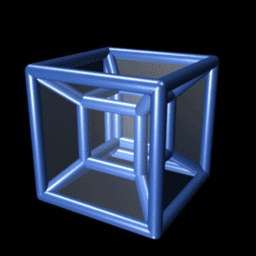An international team of astronomers, led by Yale University and University of California scientists, has pushed back the cosmic frontier of galaxy exploration to a time when the universe was only 5 percent of its present age of 13.8 billion years. The team discovered an exceptionally luminous galaxy more than 13 billion years in the past and determined its exact distance from Earth using the combined data from NASA's Hubble and Spitzer space telescopes, and the Keck I 10-meter telescope at the W. M. Keck Observatory in Hawaii. These observations confirmed it to be the most distant galaxy currently measured, setting a new record. The galaxy existed so long ago, it appears to be only 100 million years old.
The galaxy, EGS-zs8-1, was originally identified based on its particular colors in images from Hubble and Spitzer and is one of the brightest and most massive objects in the early universe. "It has already grown more than 15 percent of the mass of our own Milky Way today," said Pascal Oesch, lead author of the study from Yale University, New Haven, Connecticut. "But it had only 670 million years to do so. The universe was still very young then." The new distance measurement also enabled the astronomers to determine that EGS-zs8-1 was still forming stars very rapidly, about 80 times faster than our Milky Way galaxy today (which has a star-formation rate of one star per year.)
Only a handful of galaxies currently have accurate distances measured in this very early universe. "Every confirmation adds another piece to the puzzle of how the first generations of galaxies formed in the early universe," said Pieter van Dokkum of Yale, second author of the study. "Only the most sensitive telescopes are powerful enough to reach to these large distances." The discovery was only possible thanks to the relatively new Multi-Object Spectrometer For Infra-Red Exploration (MOSFIRE) instrument on the Keck I telescope, which allows astronomers to efficiently study several galaxies at the same time.
Measuring galaxies at these extreme distances and characterizing their properties is a main goal of astronomers over the next decade. The observations see EGS-zs8-1 at a time when the universe was undergoing very important changes: the hydrogen between galaxies was transitioning from an opaque to a transparent state. "It appears that the young stars in the early galaxies like EGS-zs8-1 were the main drivers for this transition, called reionization," said study co-author, Rychard Bouwens of the Leiden Observatory, Leiden, Netherlands.
These new Hubble, Spitzer, and Keck observations together give a new glimpse into the nature of the infant universe. They confirm that massive galaxies already existed early in the history of the universe, but that their physical properties were very different from galaxies seen around us today. Astronomers now have very strong evidence that the peculiar colors of early galaxies seen in the Spitzer images originate from a very rapid formation of massive, young stars, which interacted with the primordial gas in these galaxies.
The new observations underline the very exciting discoveries that NASA's James Webb Space Telescope will enable when it is launched in 2018. In addition to pushing the cosmic frontier to even earlier cosmic times, the Webb telescope will be able to dissect the infrared galaxy light of EGS-zs8-1 seen with the Spitzer Space Telescope and will provide astronomers with much more detailed insights into its gas properties. "Our current observations indicate that it will be very easy to measure accurate distances to these distant galaxies in the future with the James Webb Space Telescope," said Garth Illingworth of the University of California, Santa Cruz. "The result of Webb's upcoming measurements will provide a much more complete picture of the formation of galaxies at the cosmic dawn." The team’s results will appear May 5 in the online edition of The Astrophysical Journal Letters.
About the Object
Object Name: EGS-zs8-1
Object Description: Distant Galaxy
Position (J2000): R.A. 14h 20m 34.89s
Dec. 53° 00' 15".4
Constellation: Boötes
Redshift z = 7.7
About the Data
Data Description:
Data of EGS-zs8-1 were obtained from the HST proposals 12060, 12061, 12062, 12063, 12064, 12440, 12442, 12443, 12444, 12445, 13056, PIs: S. Faber (University of California, Santa Cruz) and H. Ferguson (STScI) and 13792, PI: R. Bouwens (University of Leiden).
The science team comprises: P. Oesch and P. van Dokkum (Yale University), G. Illingworth (UCO/Lick Observatory), R.J. Bouwens (Leiden Observatory), I. Momcheva (Yale University), B. Holden (UCO/Lick Observatory), G. Roberts-Borsani (Leiden Observatory), R. Smit (Durham University, UK), M. Franx and I. Labbe (Leiden Observatory), V. Gonzalez (University of California, Riverside), and D. Magee (UCO/Lick Observatory).
Instruments
and Filters :
Instrument Filter
ACS/WFC F606W (V)
WFC3/IR F125W (J)
WFC3/IR F160W (H)
About the Release
Credit: NASA, ESA, P. Oesch and I. Momcheva (Yale University), and the 3D-HST and HUDF09/XDF Teams
Release Date: May 5, 2015
Colors: These images are composites of separate exposures acquired by the ACS and the WFC3 instruments on the Hubble Space Telescope. Several filters were used to sample broad wavelength ranges. The color results from assigning different hues (colors) to each monochromatic (grayscale) image associated with an individual filter. In this case, the assigned colors are:
CANDELS/AEGIS Image
ACS/WFC: F606W (V) blue
WFC3/IR: F125W (J) green
WFC3/IR: F160W (H) red
Inset Image
WFC3/IR: F160W (H) blue
